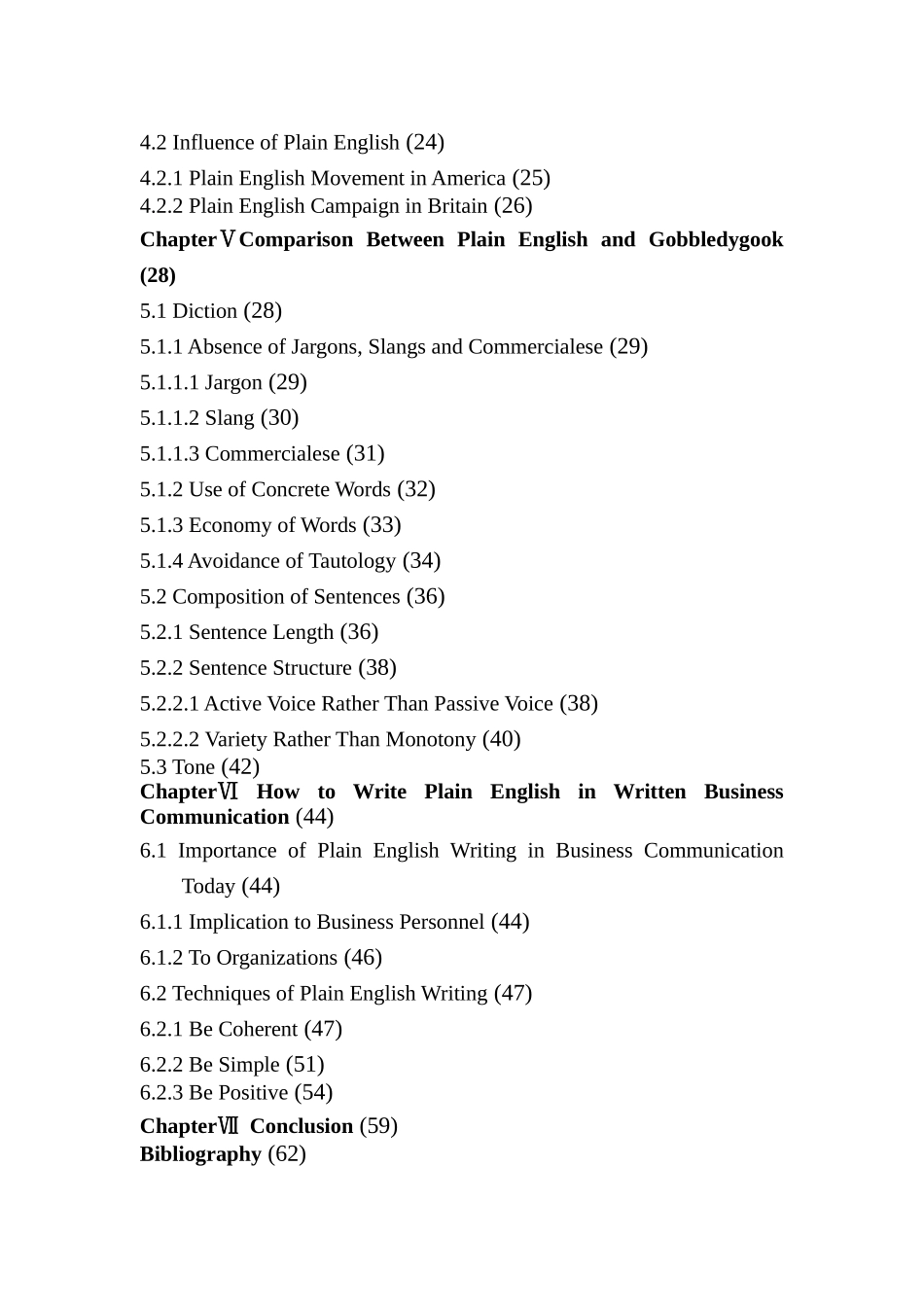The Plain English Approach to Written Business Communication ContentsAcknowledgements (4)Abstract (5)内容提要(6)ChapterⅠ Introduction (7)ChapterⅡ Written Communication in the Business World (10)2.1 The Importance of Written Communication (10)2.1.1 Economy (10)2.1.2 Accuracy (11)2.1.3 Documental Authenticity (12)2.1.4 Possible Assurance of Goodwill (13)2.2 The Characteristics of Business Writing (13)2.2.1 Business Writing is Goal-Oriented (13)2.2.2 Business Writing Takes Place in Real Time (14)2.2.3 The Writer is Responsible for Successful Communication (15)Chapter Ⅲ Principles of Business Writing (16)3.1 Style in Business Writing (16)3.2 Five Principles of Effective Business Correspondence (16)3. 2. 1 Courtesy (17)3. 2. 2 Clarity (17)3. 2. 3 Completeness (18)3. 2. 4 Correctness (19)3. 2. 5 Conciseness (20)ChapterⅣ Plain English (22)4.1 The Definition of Plain English (22)4.2 Influence of Plain English (24)4.2.1 Plain English Movement in America (25)4.2.2 Plain English Campaign in Britain (26)ChapterⅤComparison Between Plain English and Gobbledygook (28)5.1 Diction (28)5.1.1 Absence of Jargons, Slangs and Commercialese (29)5.1.1.1 Jargon (29)5.1.1.2 Slang (30)5.1.1.3 Commercialese (31)5.1.2 Use of Concrete Words (32)5.1.3 Economy of Words (33)5.1.4 Avoidance of Tautology (34)5.2 Composition of Sentences (36)5.2.1 Sentence Length (36)5.2.2 Sentence Structure (38)5.2.2.1 Active Voice Rather Than Passive Voice (38)5.2.2.2 Variety Rather Than Monotony (40)5.3 Tone (42)ChapterⅥ How to Write Plain English in Written Business Communication (44)6.1 Importance of Plain English Writing in Business Communication Today (44)6.1.1 Implication to Business Personnel (44)6.1.2 To Organizations (46)6.2 Techniques of Plain English Writing (47)6.2.1 Be Coheren...












